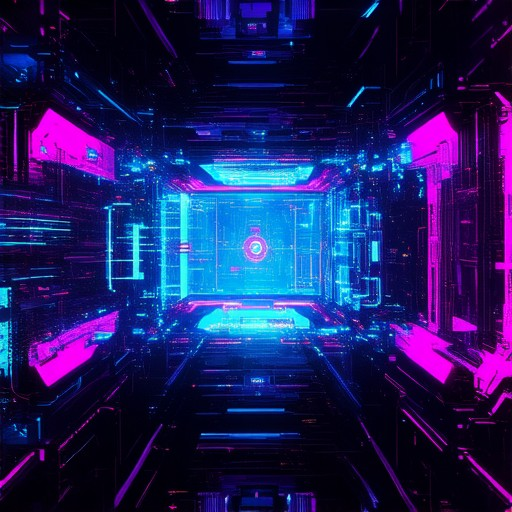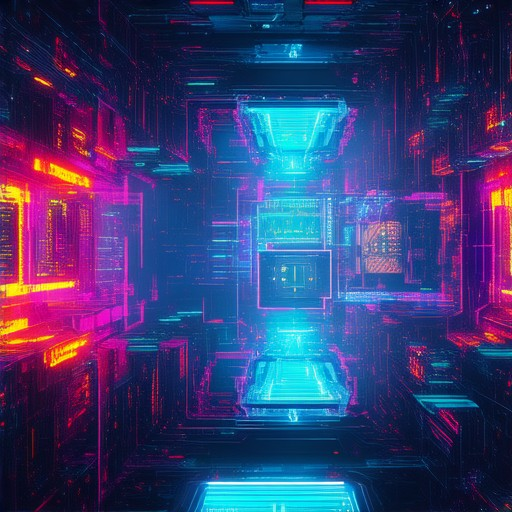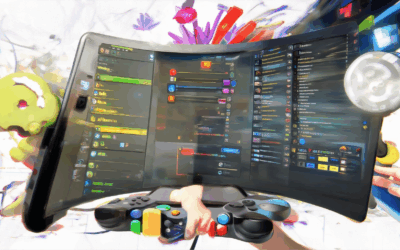Designing a game HUD is a critical aspect of creating an immersive and engaging gaming experience. A well-crafted heads-up display (HUD) can significantly enhance player interaction, providing essential information seamlessly while preserving visual fidelity. Whether you’re developing for console, PC, or mobile platforms, the design of your HUD plays a pivotal role in shaping user experience and overall gameplay satisfaction. By carefully balancing functionality with aesthetics, developers can create interfaces that not only serve as informative tools but also contribute to the broader narrative and atmosphere of the game. From improving navigation and accessibility to tailoring designs for diverse genres, the art of crafting a HUD demands meticulous planning and execution. In this comprehensive guide, we explore the key elements, strategies, and best practices necessary to design an effective HUD, ensuring your players benefit from a intuitive and visually appealing interface.
Key Takeaways
– Clarity and Visibility: Ensure the HUD displays information in an easily readable format with contrasting colors and sufficient font size for quick comprehension.
– Customization Options: Allow players to tailor the HUD layout, font size, and color scheme to enhance personalization and user experience.
– Consistent Layout Across Screens: Maintain a unified design language to create a cohesive user experience, reducing cognitive load during gameplay.
– Functional Integration: Design the HUD to seamlessly integrate with the game engine for real-time updates and smooth transitions between menus and in-game views.
– Visually Appealing Design: Use high-quality textures and vibrant colors to make the HUD stand out, elevating the overall gaming experience.
– Responsive Design: Optimize the HUD to adapt to different screen resolutions and devices, ensuring crisp and legible display across all platforms.
– Real-Time Updates: Display dynamic information such as health, ammo, and objectives to keep players informed and engaged.
– Accessibility Features: Implement adjustable settings like contrast and scaling to accommodate a wide range of user preferences and needs.
– Seamless Interaction with Other UI Elements: Ensure the HUD complements other in-game interfaces without overwhelming the player, maintaining intuitive navigation.

How Can I Design a Good HUD for My Game?
To design an effective HUD (Heads-Up Display) for your game, follow these organized steps:
- Plan and Prioritize Features
- Identify essential information to display, such as health, ammo, map, objectives, level, and score.
- Focus on clarity and simplicity to avoid overwhelming players.
- Determine Layout and Placement
- Position the HUD at the bottom or center for optimal visibility without obstructing gameplay views.
- Ensure consistency across different screens and align with the game’s aesthetic.
- Design Visual Style
- Match the HUD’s visual style with your game’s theme, whether retro, futuristic, or another style.
- Use a clean and readable design, avoiding excessive detail.
- Implement Navigation and Controls
- Use intuitive navigation with tabs or buttons for easy access.
- Adapt controls for different devices, ensuring ease of use whether it’s touch or mouse/keyboard.
- Incorporate Customization Options
- Allow players to customize HUD elements like font size and color, within limits to maintain a consistent experience.
- Use Icons and Color Coding
- Utilize standard symbols for quick recognition.
- Employ color to indicate statuses, such as red for low health and green for positive events.
- Add Subtle Animations
- Introduce subtle effects like a glow to provide immediate feedback without distraction.
- Integrate with Game World Context
- Display relevant data like nearby enemies or collectibles to enhance immersion.
- Test and Iterate
- Conduct playtesting to gather feedback and refine the design based on tester inputs.
- Ensure Responsiveness
- Create a HUD that adapts to various screen sizes and resolutions using scalable elements.
- Consider Accessibility
- Implement features like high contrast modes and clear visual cues to cater to diverse player needs.
By following these steps, you can create a HUD that enhances gameplay experience, providing essential information in an intuitive and visually appealing manner.
Designing a Game HUD That Enhances Player Experience
Creating an effective game HUD (heads-up display) requires careful consideration of its design, functionality, and how it interacts with the player. Below are key steps and considerations to help you design a HUD that truly enhances the player experience.
1. Prioritize Essential Information
Your HUD should display only the most critical information to avoid overwhelming the player. Focus on essential stats like health, ammo, and objectives. Use a clean, uncluttered design to ensure the player can quickly find what they need without getting lost in a sea of data.
2. Offer Customization Options
Players have unique playstyles, so provide customization options. Allow them to toggle on/off certain elements, adjust color schemes, and choose fonts. This level of control empowers players to create an interface that suits their preferences, fostering a more personal connection to the game.
3. Incorporate Dynamic Elements
Make the HUD more engaging by incorporating dynamic elements. Show real-time stats, such as enemy weaknesses or damage dealt, to give players actionable information. Consider adding interactive tooltips or quick-reference guides to help players navigate the interface efficiently.
4. Test and Iterate
Testing is a vital part of the process. Gather feedback from players to identify areas that may be confusing or unnecessary. Use this information to refine and improve the HUD iteratively, ensuring it remains user-friendly and visually appealing.
5. Stay Inspired by Competitors
Look at successful HUD designs from competitors like Blizzard, Valve, and other leading game developers. Their interfaces often strike a balance between functionality and aesthetics, providing valuable insights into what works well in real-world applications.
6. Optimize Performance
Ensure your HUD runs smoothly without impacting game performance. Use efficient rendering techniques and optimize textures and assets to maintain high frame rates and reduce load times.
7. Consider Cross-Platform Compatibility
Design your HUD with cross-platform compatibility in mind. Players enjoy a variety of devices, so ensure the interface adapts seamlessly to different screen sizes and resolutions. Implement responsive design principles to accommodate varying hardware.
8. Provide Documentation and Support
Include detailed documentation or in-game tutorials to help players understand and customize their HUD. Create a community space where players can share their favorite configurations and tips for optimizing their experience.
By focusing on these key aspects, you can create a game HUD that not only enhances the player experience but also elevates your game to new heights. Remember, the goal is to make the HUD feel like an extension of the game world itself, providing valuable information in a way that doesn’t disrupt immersion but rather enriches it.

Key Elements Needed for Designing an Effective Game HUD
An effective game HUD (Head-Up Display) requires careful consideration of several critical elements to ensure it enhances the gaming experience while remaining user-friendly. Here’s a breakdown of the essential components:
1. Clarity and Visibility
The HUD must present information in a clear and easily readable format. Key metrics like health, ammo, and objectives should be displayed prominently without overwhelming the player. Consistent font sizes, colors, and spacing are vital to ensure quick comprehension.
2. Customization Options
Allow players to tweak the HUD layout according to their preferences. Some gamers prefer a minimalist design, while others may want more detailed information. Providing options for customizing icons, color schemes, and layout ensures the HUD feels personal and adaptable.
3. Consistent Layout Across Screens
A disjointed HUD can confuse players, especially during fast-paced gameplay. Maintain a unified design language across all screens to create a cohesive user experience. Consistency in iconography and information placement helps reduce cognitive load.
4. Functional Integration
The HUD should seamlessly integrate with the game engine and other UI elements. Ensure real-time updates for metrics like health, mana, and objectives. Smooth transitions between menus and in-game views prevent disruptions.
5. Visually Appealing Design
Aesthetics play a significant role in immersion. Use high-quality textures, vibrant colors, and innovative animations to make the HUD stand out. A visually engaging interface can elevate the overall gaming experience.
6. Responsiveness
The HUD must adapt to different screen resolutions and devices. Whether played on a console, PC, or mobile device, the display should remain crisp and legible without compromising functionality.
7. Seamless Interaction with Other UI Elements
The HUD shouldn’t clash with other in-game interfaces. Proper layering and prioritization of elements ensure that critical information is always accessible. Avoid clutter and ensure intuitive navigation.
8. Real-Time Updates
Display dynamic and evolving information to keep players informed. Real-time stats and interactive elements add depth and engagement to the experience.
9. Accessibility Features
Consider players with disabilities by incorporating features like adjustable font sizes, high-contrast modes, and audio cues. Making the HUD accessible ensures a broad audience can enjoy the game.
By focusing on these key elements, developers can create a HUD that not only enhances gameplay but also becomes a integral part of the gaming experience. For more tips and resources on optimizing your game’s HUD, visit Indie Dev Games .

Key Elements Needed for Designing an Effective Game HUD
An effective game HUD (Head-Up Display) requires careful consideration of several critical elements to ensure it enhances the gaming experience while remaining user-friendly. Here’s a breakdown of the essential components:
1. Clarity and Visibility
The HUD must present information in a clear and easily readable format. Key metrics like health, ammo, and objectives should be displayed prominently without overwhelming the player. Consistent font sizes, colors, and spacing are vital to ensure quick comprehension.
2. Customization Options
Allow players to tweak the HUD layout according to their preferences. Some gamers prefer a minimalist design, while others may want more detailed information. Providing options for customizing icons, color schemes, and layout ensures the HUD feels personal and adaptable.
3. Consistent Layout Across Screens
A disjointed HUD can confuse players, especially during fast-paced gameplay. Maintain a unified design language across all screens to create a cohesive user experience. Consistency in iconography and information placement helps reduce cognitive load.
4. Functional Integration
The HUD should seamlessly integrate with the game engine and other UI elements. Ensure real-time updates for metrics like health, mana, and objectives. Smooth transitions between menus and in-game views prevent disruptions.
5. Visually Appealing Design
Aesthetics play a significant role in immersion. Use high-quality textures, vibrant colors, and innovative animations to make the HUD stand out. A visually engaging interface can elevate the overall gaming experience.
6. Responsiveness
The HUD must adapt to different screen resolutions and devices. Whether played on a console, PC, or mobile device, the display should remain crisp and legible without compromising functionality.
7. Seamless Interaction with Other UI Elements
The HUD shouldn’t clash with other in-game interfaces. Proper layering and prioritization of elements ensure that critical information is always accessible. Avoid clutter and ensure intuitive navigation.
8. Real-Time Updates
Display dynamic and evolving information to keep players informed. Real-time stats and interactive elements add depth and engagement to the experience.
9. Accessibility Features
Consider players with disabilities by incorporating features like adjustable font sizes, high-contrast modes, and audio cues. Making the HUD accessible ensures a broad audience can enjoy the game.
By focusing on these key elements, developers can create a HUD that not only enhances gameplay but also becomes a integral part of the gaming experience. For more tips and resources on optimizing your game’s HUD, visit Indie Dev Games .
What Are the Most Important Aspects of Designing a Game HUD to Enhance the Player Experience?
Designing a game HUD (Head-Up Display) is crucial for creating an engaging and immersive experience. Here are the key aspects to consider:
1. Clarity and Simplicity
The HUD should present information in an intuitive manner, ensuring players can quickly find what they need without confusion. Avoid overwhelming the player with too much data. Use consistent icons and color coding to maintain usability.
2. Customization Options
Allow players to tailor the HUD to their preferences. Let them choose which stats, maps, or info panels they want to see. This personalization enhances the sense of control and immersion.
3. Visual Hierarchy
Establish a clear visual hierarchy to guide the player’s attention. Place the most critical information, like health or ammo, in prominent positions. Use size, contrast, and placement to highlight vital elements while minimizing distractions.
4. Feedback Mechanisms
Incorporate feedback mechanisms that reinforce actions and provide guidance. Visual cues for successful interactions or warnings for failures help players understand their actions and improve their gameplay.
5. Cross-Platform Consistency
Maintain consistency across different platforms to ensure a seamless experience. Players expect the HUD to look and function similarly whether they’re playing on PC, console, or mobile. This consistency builds trust and improves overall satisfaction.
6. Minimizing Distractions
Avoid cluttering the HUD with unnecessary information. Keep it focused on the core elements that matter to the player. Use space wisely to ensure the display remains unobtrusive while providing essential data.
7. Adaptability
Make the HUD adaptable to different playstyles and difficulty levels. For example, allow players to toggle between different views or adjust the scale of the display based on their needs.
8. Accessibility Features
Include accessibility features such as adjustable font sizes, high-contrast modes, and audio alerts for important events. These features ensure the HUD is usable for a broad range of players, including those with disabilities.
9. Real-Time Updates
Ensure the HUD dynamically updates to reflect changes in the game world, such as enemy spawn rates, weather conditions, or mission objectives. Real-time information keeps the player informed and engaged.
10. Responsive Design
Implement a responsive design that adapts to different screen sizes and resolutions. This ensures the HUD looks great and functions smoothly across various devices.
By focusing on these aspects, you can create a HUD that not only enhances the player experience but also elevates your game’s visual appeal and replayability. For more tips and resources on optimizing your game’s UI, visit Indie Dev Games .

Essential Elements Needed When Designing a Game HUD
- Clarity and Visibility:** Ensure the HUD displays information in an easily readable format. Use contrasting colors and sufficient font size to prevent eye strain and ensure quick comprehension.
- Customization Options:** Allow players to adjust the layout, font size, and color scheme according to personal preference, enhancing the overall user experience.
- Color Coding and Hierarchy:** Use color to differentiate levels of importance. Critical information like health or ammo should stand out, while less vital details can be less prominent.
- Responsive Design:** Optimize the HUD to adapt to different screen resolutions and aspect ratios, ensuring it looks great on both desktops and mobile devices.
- Integration with Game Engine:** Ensure seamless communication between the HUD and the game engine to update in real-time without lag or delays.
- Real-Time Information Display:** Show dynamic updates such as damage dealt, remaining health, enemy strength, and objectives. This keeps players informed and engaged.
- Visual Hierarchy:** Establish a clear visual hierarchy to guide the player’s attention. Prioritize essential information while allowing optional details to be accessible without clutter.
- Accessibility Features:** Implement adjustable settings like contrast and scaling to accommodate a wide range of user preferences and needs.
- Seamless Gameplay Integration:** Design the HUD to minimize distractions and ensure it complements the game’s interface without overwhelming the player.
- User-Centric Design:** Test the HUD with actual players to gather feedback and iterate based on their experiences and suggestions.
Conclusion: A well-designed HUD enhances the gaming experience by providing essential information in an intuitive and visually appealing manner. By focusing on clarity, customization, and seamless integration, developers can create a HUD that truly elevates the gameplay.




0 Comments